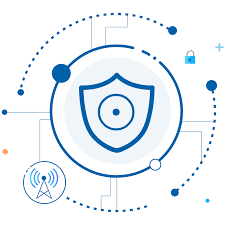Securing the Future: 5G Security Solutions
As the world eagerly embraces the era of 5G technology, the need for robust security solutions becomes paramount. 5G promises unparalleled speed, connectivity, and transformative potential across industries, but it also introduces new cybersecurity challenges that must be addressed proactively. Let's delve into the essential aspects of 5G security solutions and their significance:
Understanding the 5G Landscape
5G technology represents a significant leap from its predecessors, offering ultra-low latency, massive connectivity, and enhanced reliability. This advancement is poised to revolutionize sectors such as healthcare, manufacturing, transportation, and smart cities, among others. However, its implementation introduces complexities that extend beyond traditional networking concerns.
Key Security Challenges
Increased Attack Surface: With a vast network of interconnected devices and sensors, 5G significantly expands the attack surface, making it more susceptible to cyber threats.
Edge Computing Vulnerabilities: Edge computing, integral to 5G, decentralizes data processing closer to the source. While this enhances speed and efficiency, it also introduces new vulnerabilities that need robust security measures.
Supply Chain Risks: The global nature of 5G deployment involves multiple vendors and suppliers, increasing supply chain risks and potential for compromised components or software.
Privacy Concerns: Enhanced data collection and analytics capabilities with 5G raise privacy concerns, necessitating stringent data protection measures compliant with regulatory frameworks.
Essential 5G Security Solutions
Encryption and Authentication: Implementing end-to-end encryption and strong authentication mechanisms safeguard data integrity and prevent unauthorized access.
Network Slicing Security: Secure network slicing ensures isolated virtual networks within the 5G infrastructure remain protected from cross-boundary threats.
AI-Powered Threat Detection: Utilizing artificial intelligence and machine learning for real-time threat detection and response enhances proactive security measures.
Zero Trust Architecture: Adopting a zero trust approach ensures that every device and user undergoes continuous verification before accessing resources, reducing the risk of insider threats.
Comprehensive Risk Assessment: Conducting regular risk assessments and audits helps identify vulnerabilities and mitigate potential security gaps across the 5G ecosystem.
Collaboration and Regulation
Addressing 5G security challenges requires collaboration among industry stakeholders, government bodies, and cybersecurity experts. Establishing global standards and regulatory frameworks ensures consistency in security practices and fosters trust in 5G technology adoption.
Conclusion
As 5G technology unlocks unprecedented opportunities for innovation and connectivity, safeguarding its infrastructure and data integrity is paramount. By embracing advanced security solutions and proactive measures, stakeholders can harness the full potential of 5G while mitigating cybersecurity risks effectively. Together, we can pave the way for a secure and resilient 5G future, driving sustainable growth and digital transformation across industries.




Comments
Post a Comment